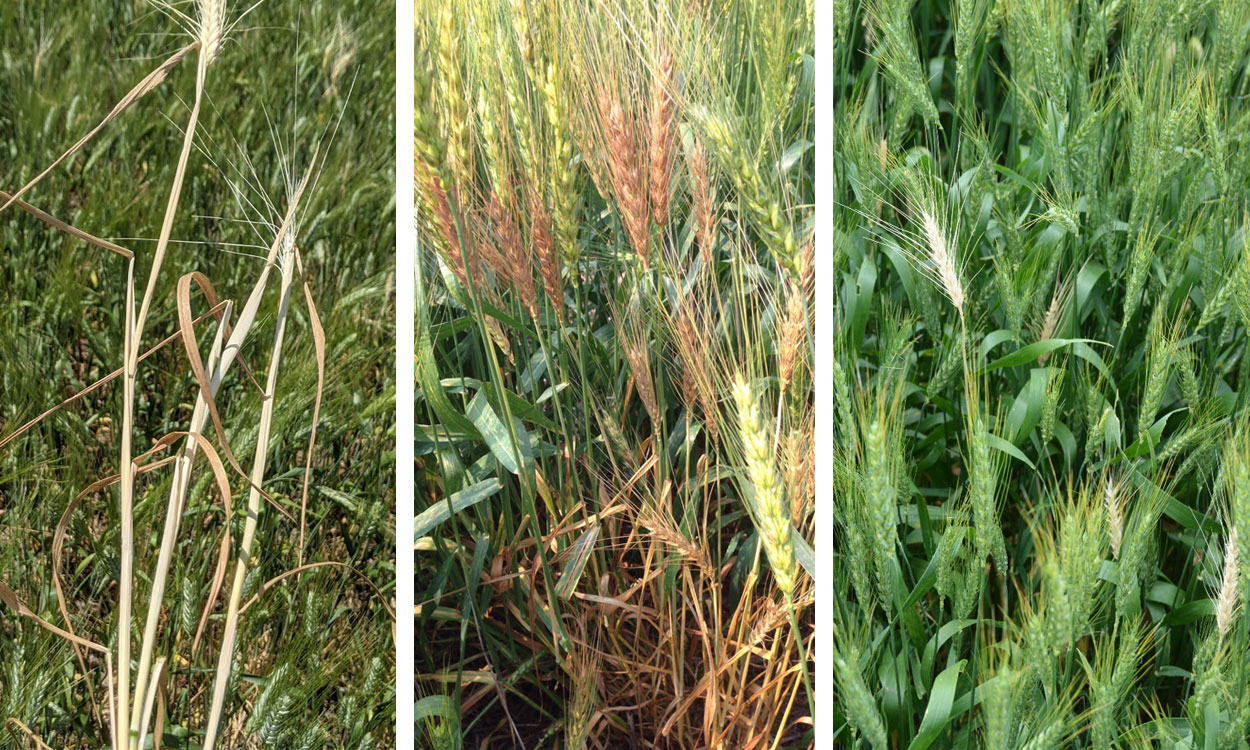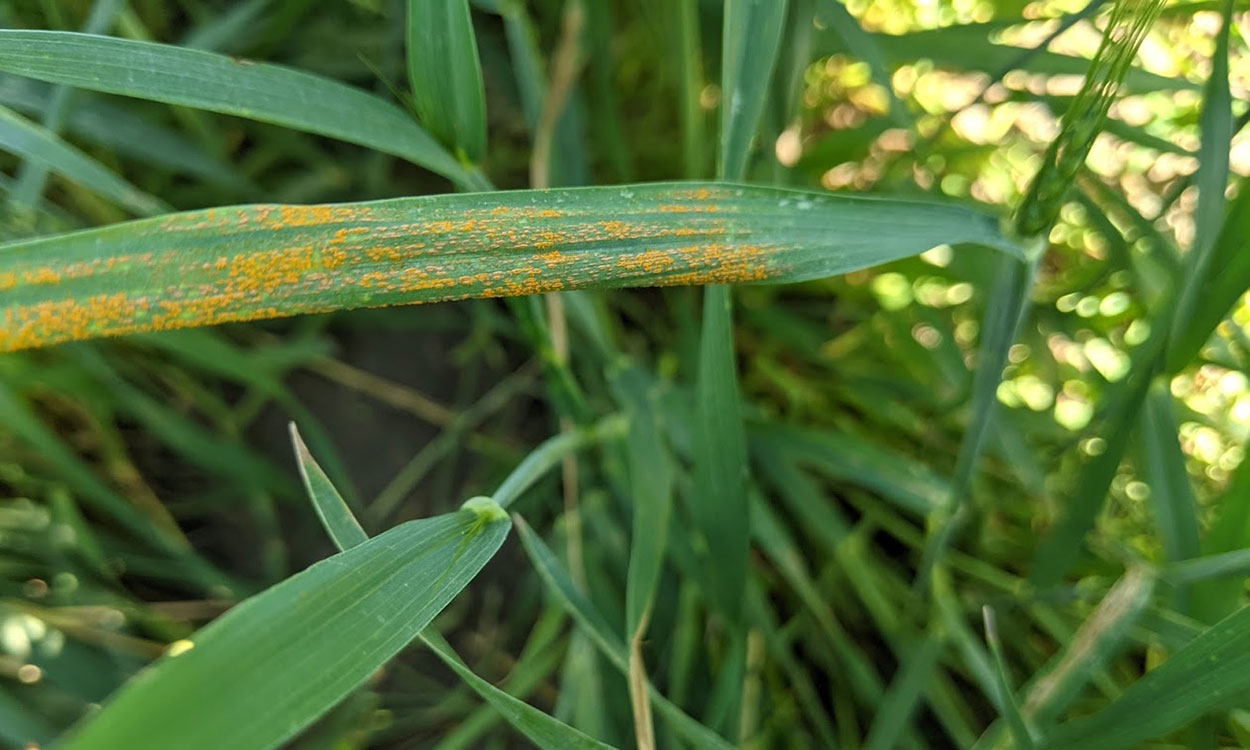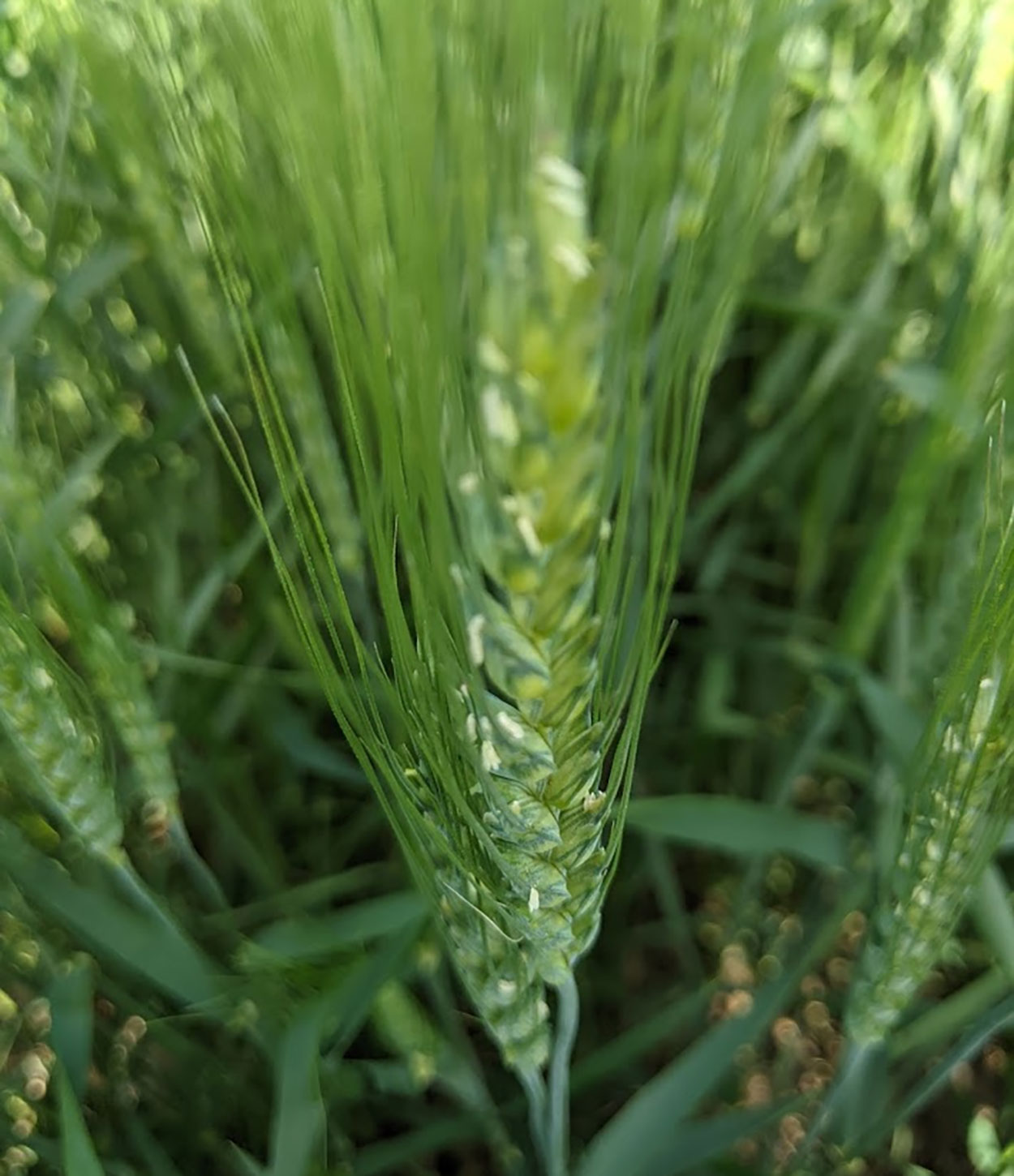Search
Aphanomyces Root Rot of Alfalfa
Fact sheet on Aphanomyces Root Rot of Alfalfa

South Dakota 4-H’ers Step Up to End Mental Health Stigma
November 12, 2021
Hailey Stuck, Allison Fischer and Olivia Miller have certainly done their part in raising mental health awareness across the state over the last year, as each received a purple ribbon for their Mastery Showcase exhibits at the 2021 State Fair.

Differentiating Between Wheat Head Diseases and Disorders
Several diseases and disorders can develop in wheat heads. Learn the symptoms of several common disease and insect issues being observed in South Dakota wheat this growing season.

Drought Conditions May Increase Soybean Cyst Nematode Population in Soil
Moisture stress coupled with above-normal temperatures have been linked with increased soybean cyst nematode populations in the soil. In order to keep populations in the soil below the yield-reducing levels, there are a few management practices which can be used.

Stripe Rust Starting To Develop in Winter Wheat
Stripe rust was found in a few winter wheat fields scouted this week. The presence of a few plants with stripe rust indicates there is inoculum of this pathogen in the state.

Use Fusarium Head Blight Risk Prediction Tools for Better Disease Management
Winter wheat has reached the flowering growth stage, which is a time of high risk for Fusarium head blight. By using disease prediction tools correctly, a producer can protect wheat from infection by applying a timely fungicide when the tools show moderate to high risk.

Prussic Acid Precautions
During periods of drought, it is important to aware of the factors that can be a concern during these conditions, specifically nitrates and prussic acid. It is important to take precautions when using feeds that could contain one or both compounds.

Wheat Streak Mosaic of Wheat
Fact sheet about symptoms, disease cycle, risk factors and management of Wheat streak mosaic disease

Science, Technology, Engineering and Math (STEM)
STEM programing supports youth in developing a variety of skills including critical thinking, team work and communication.

Oat Crown Rust Risk Low This Year
Oat fields recently scouted were found with very low levels of crown rust. This is primarily due to warm and dry weather conditions that we are currently experiencing.